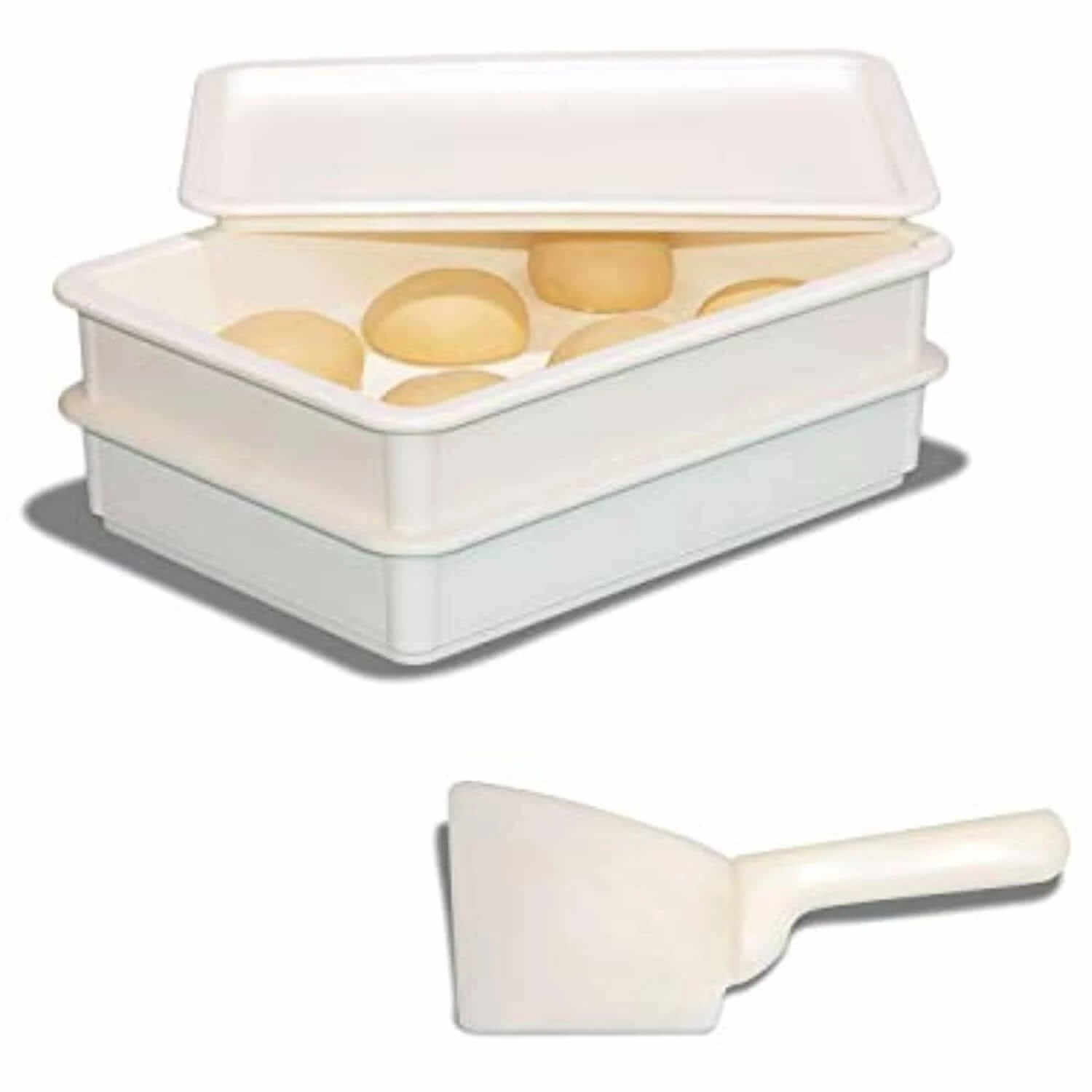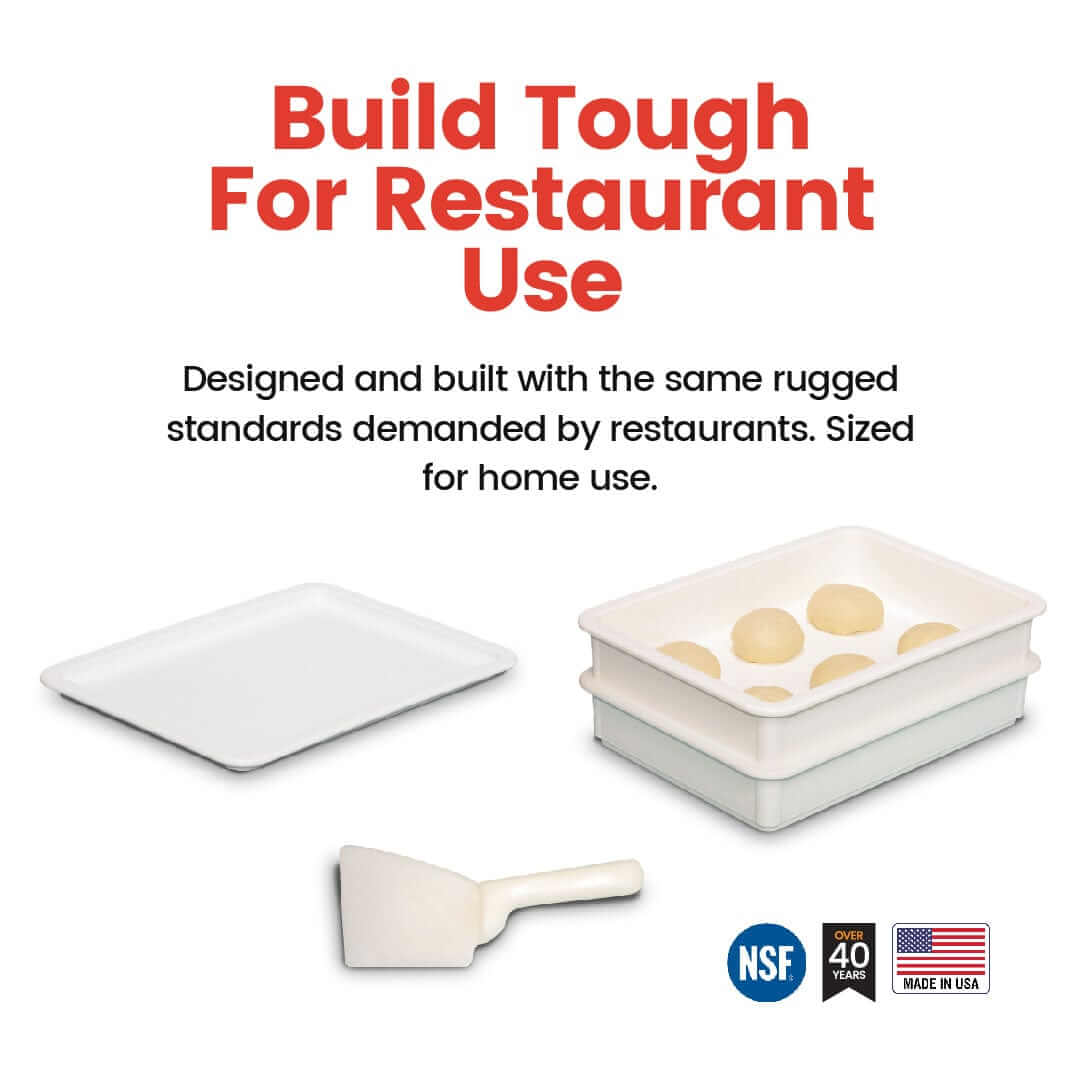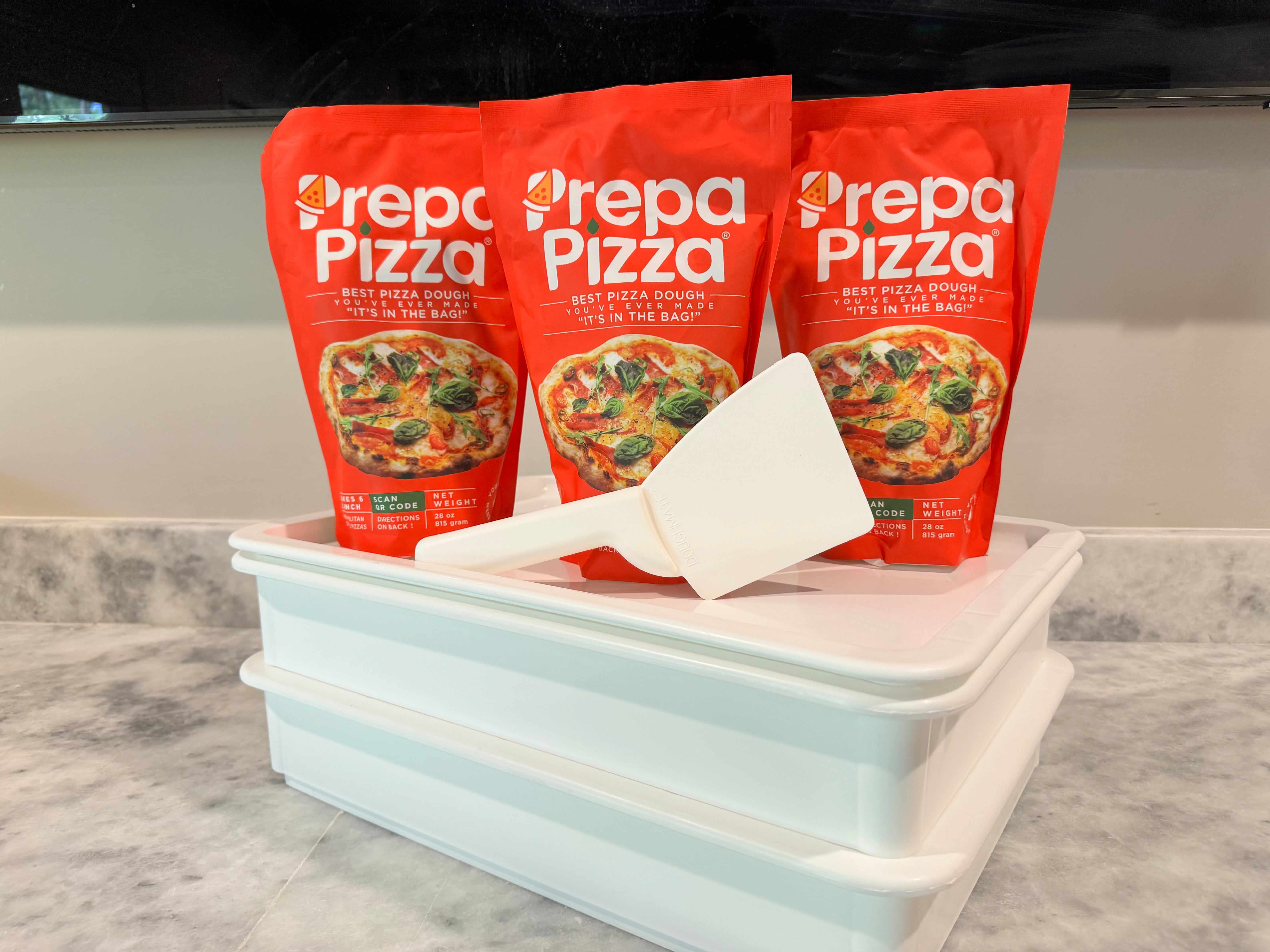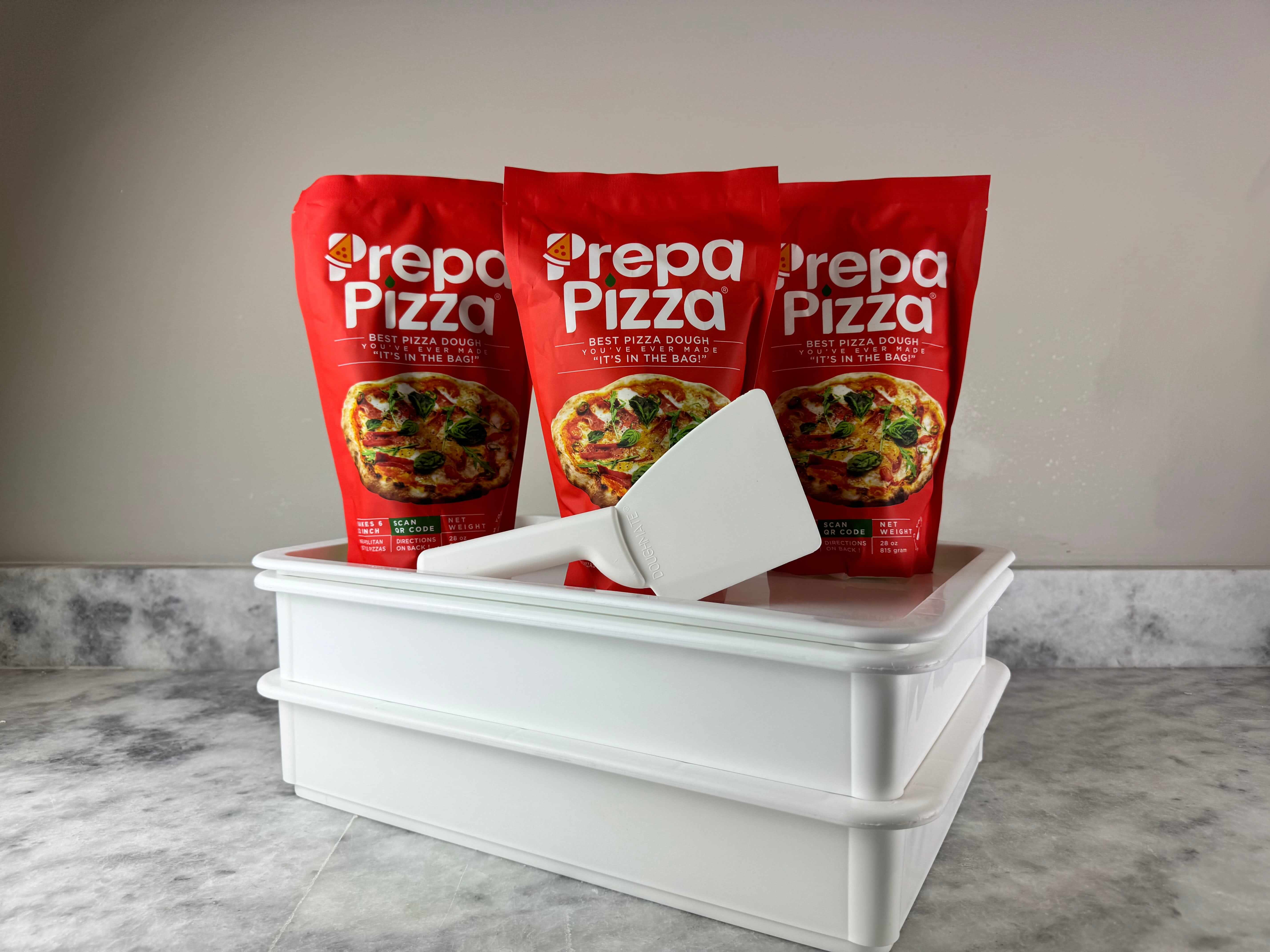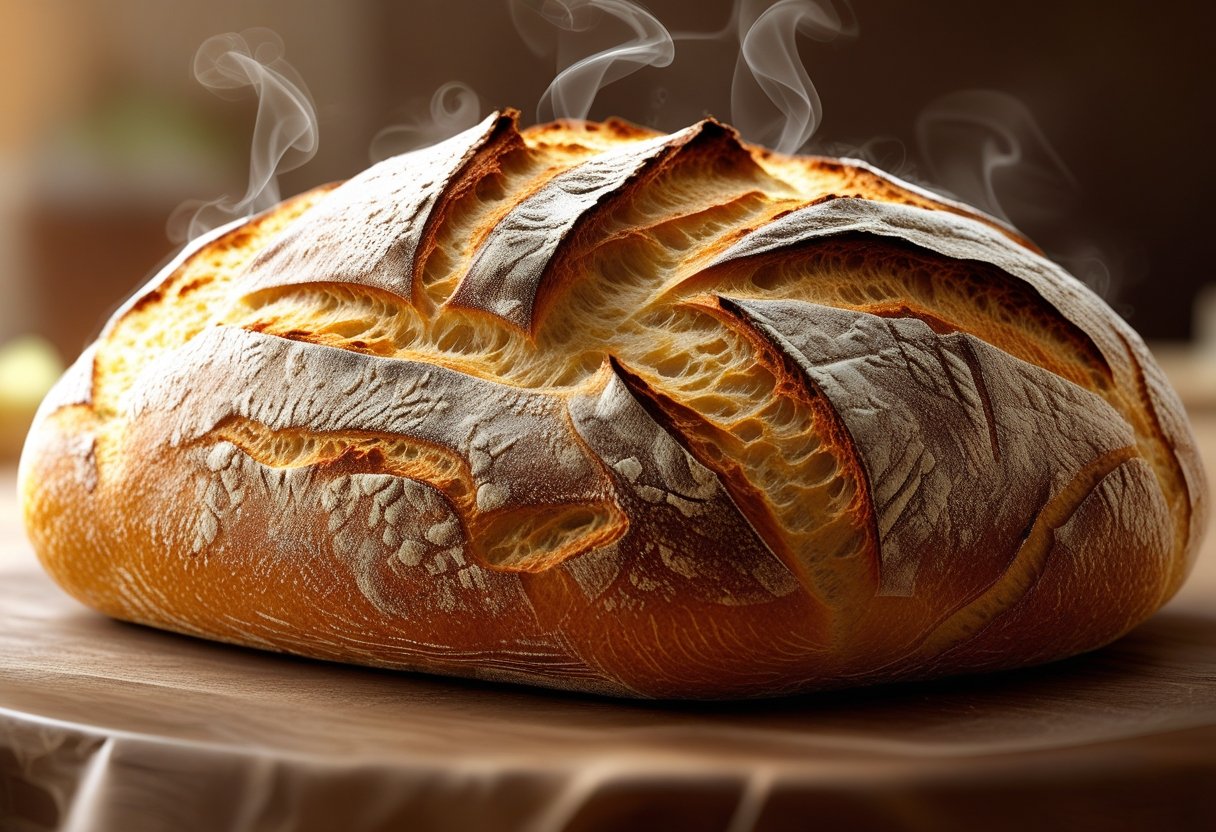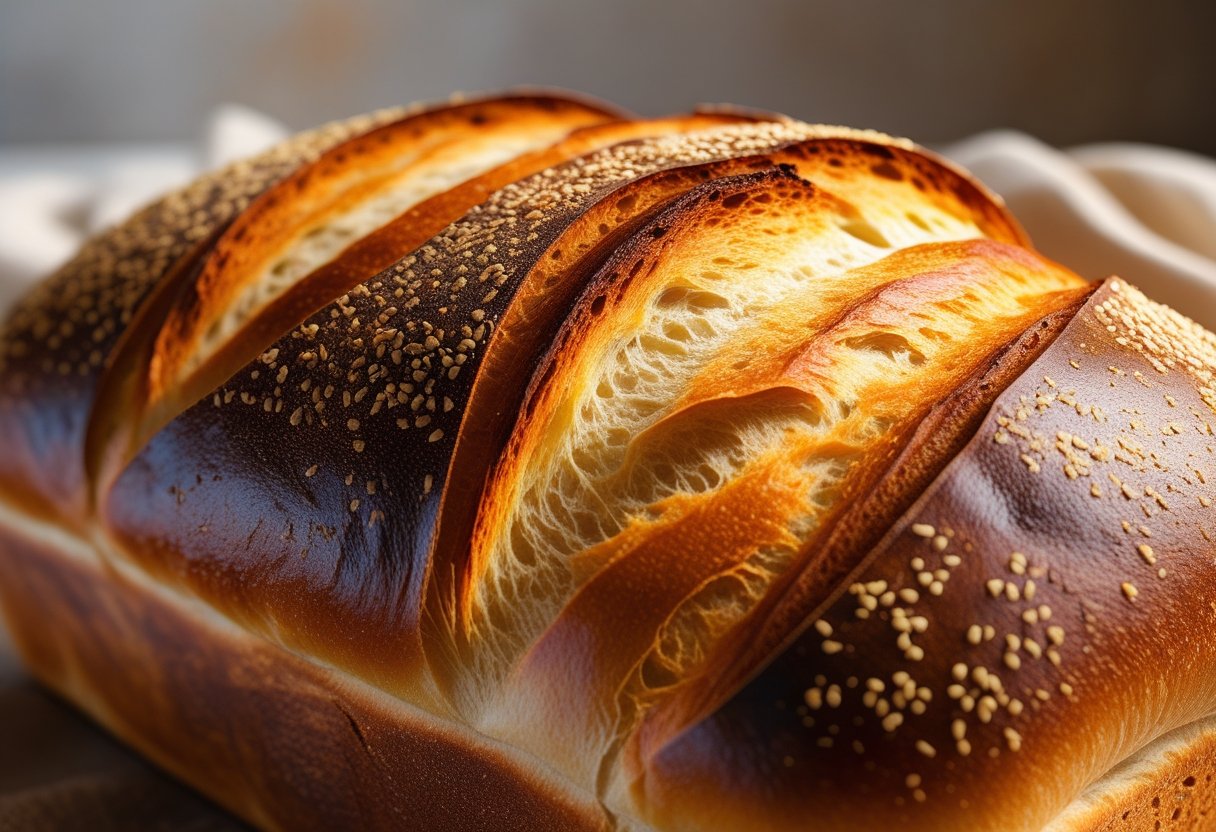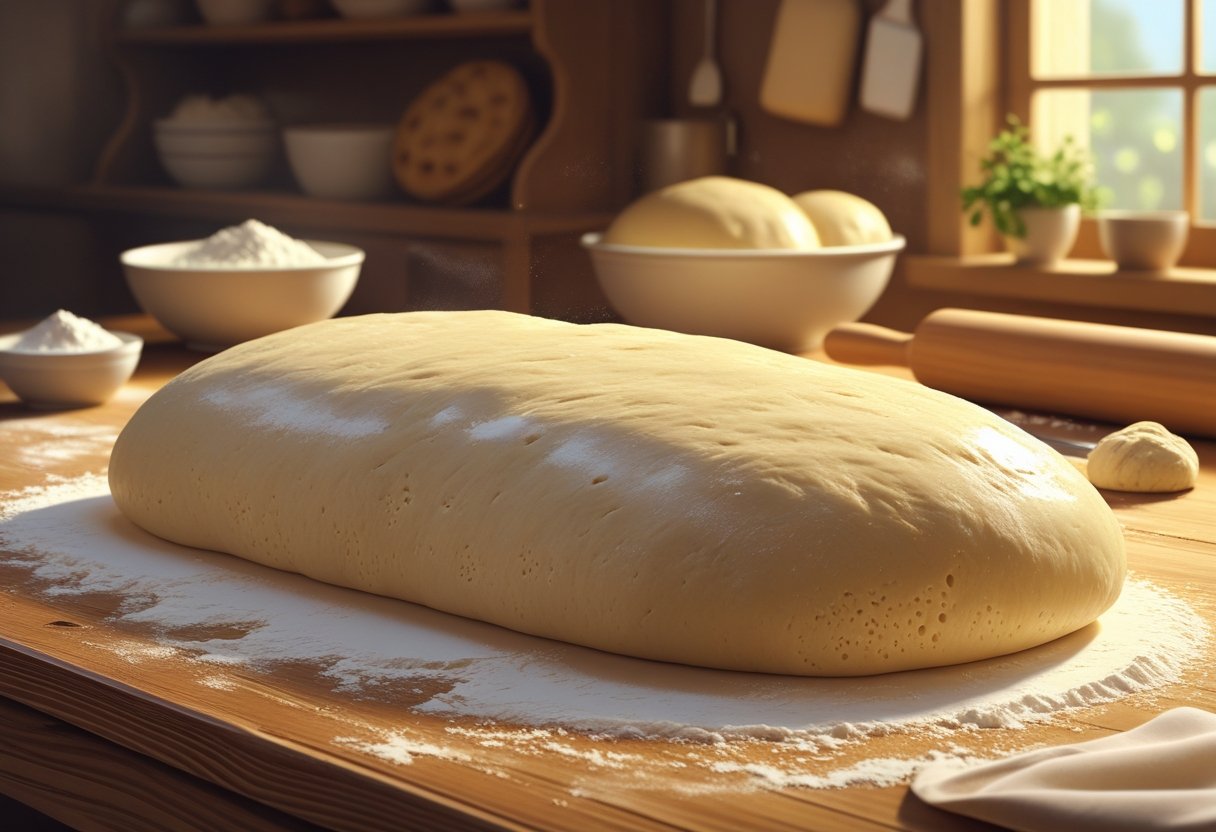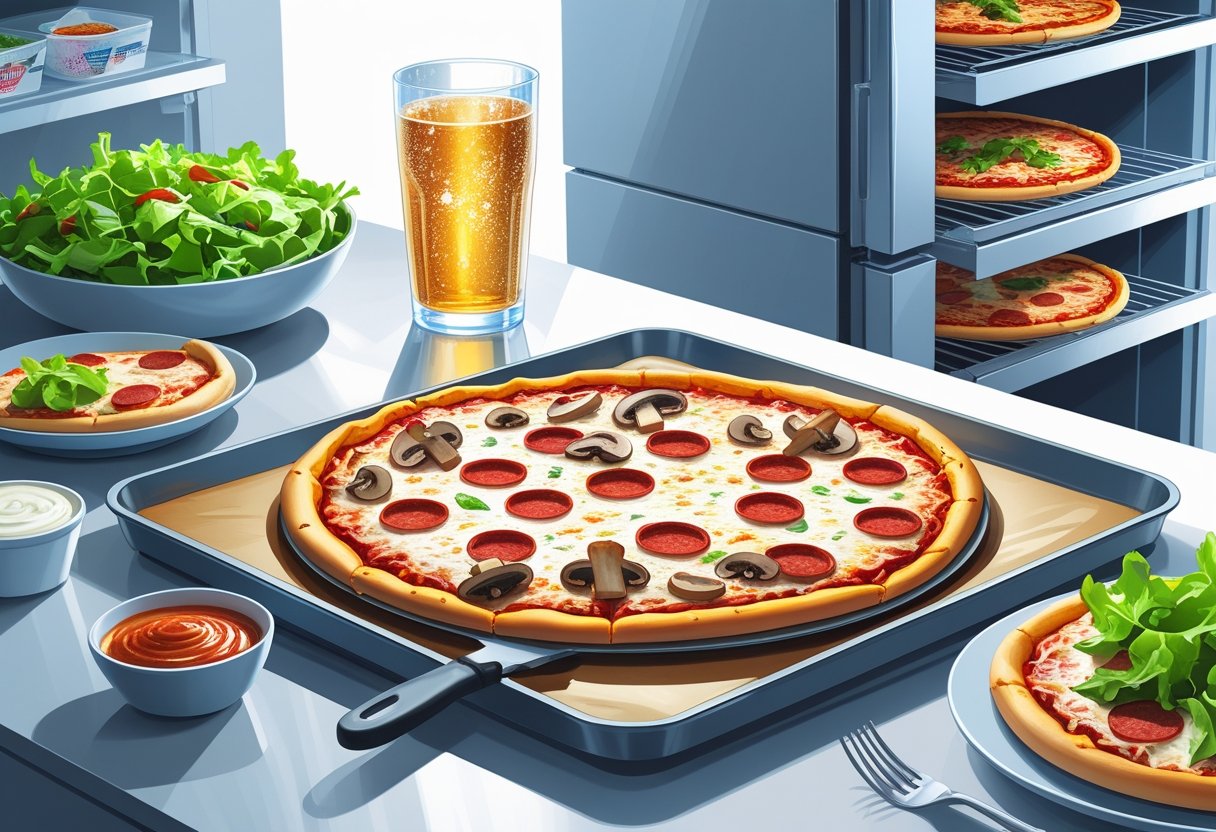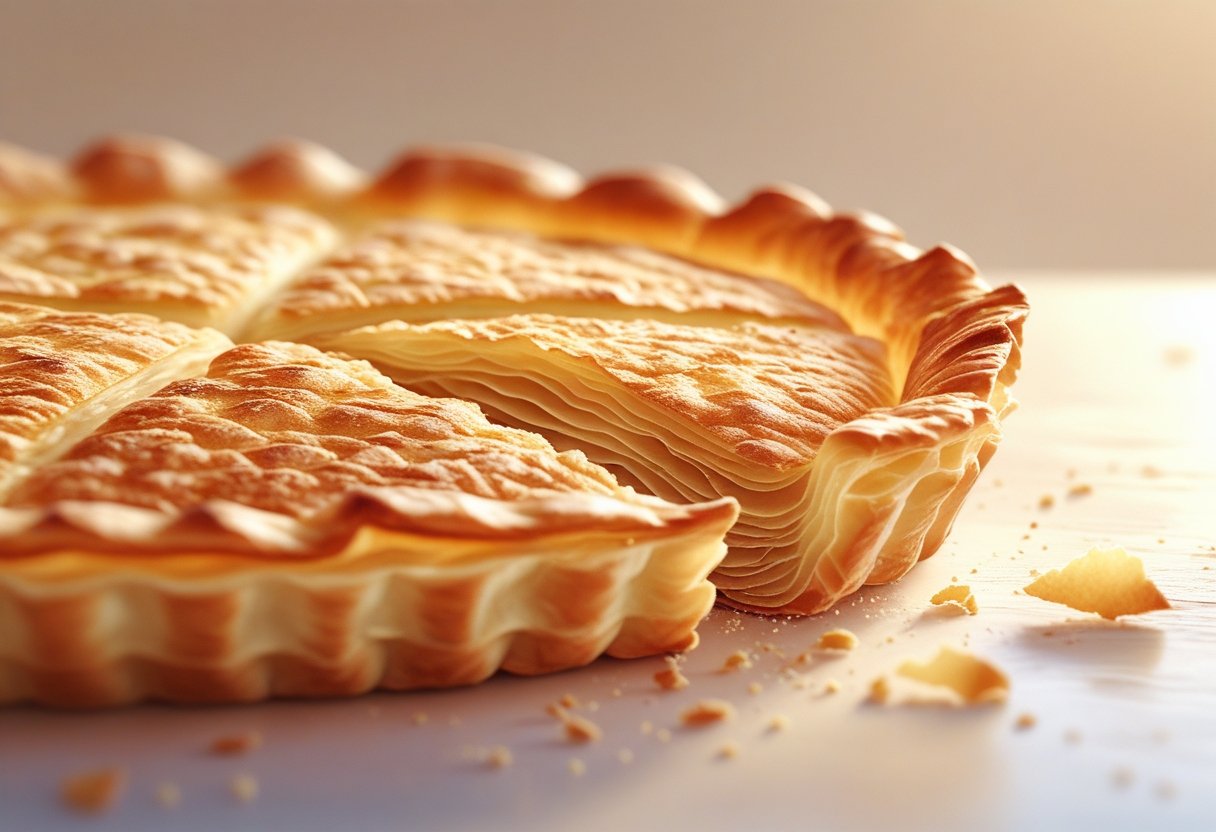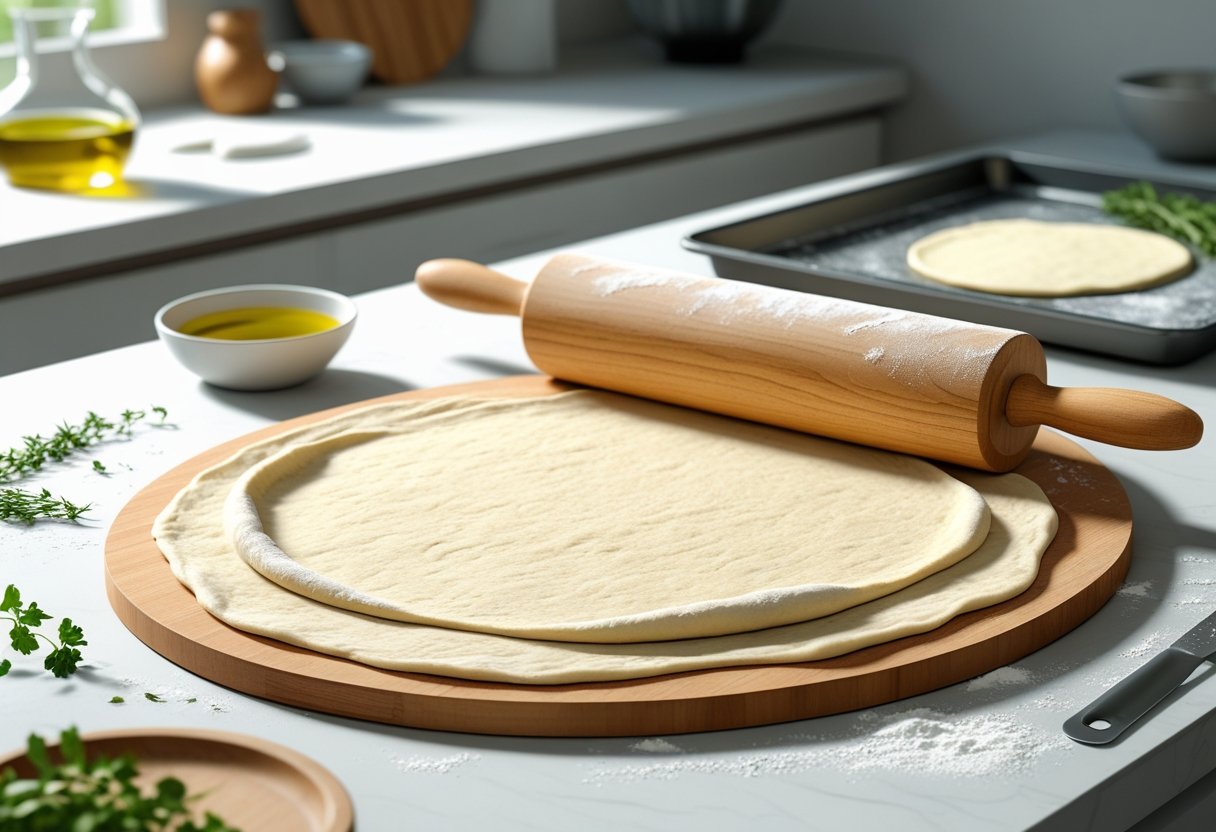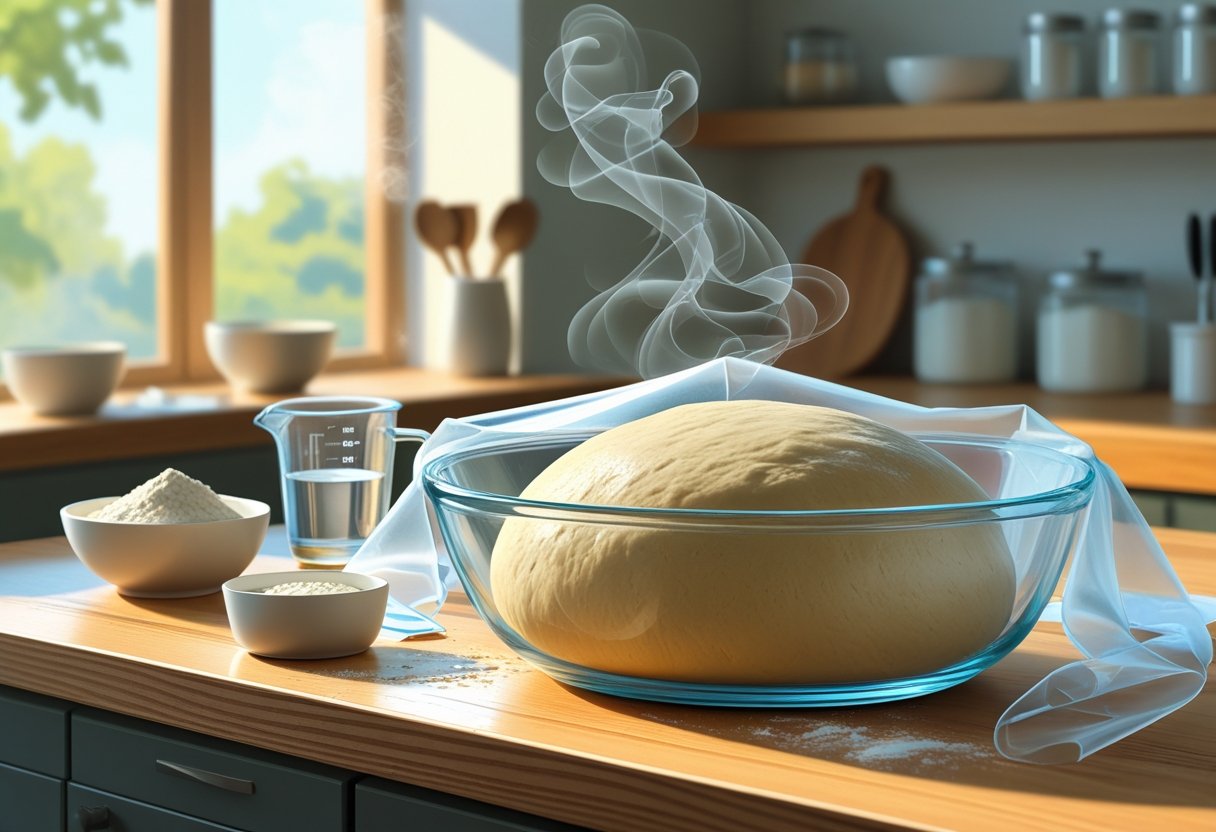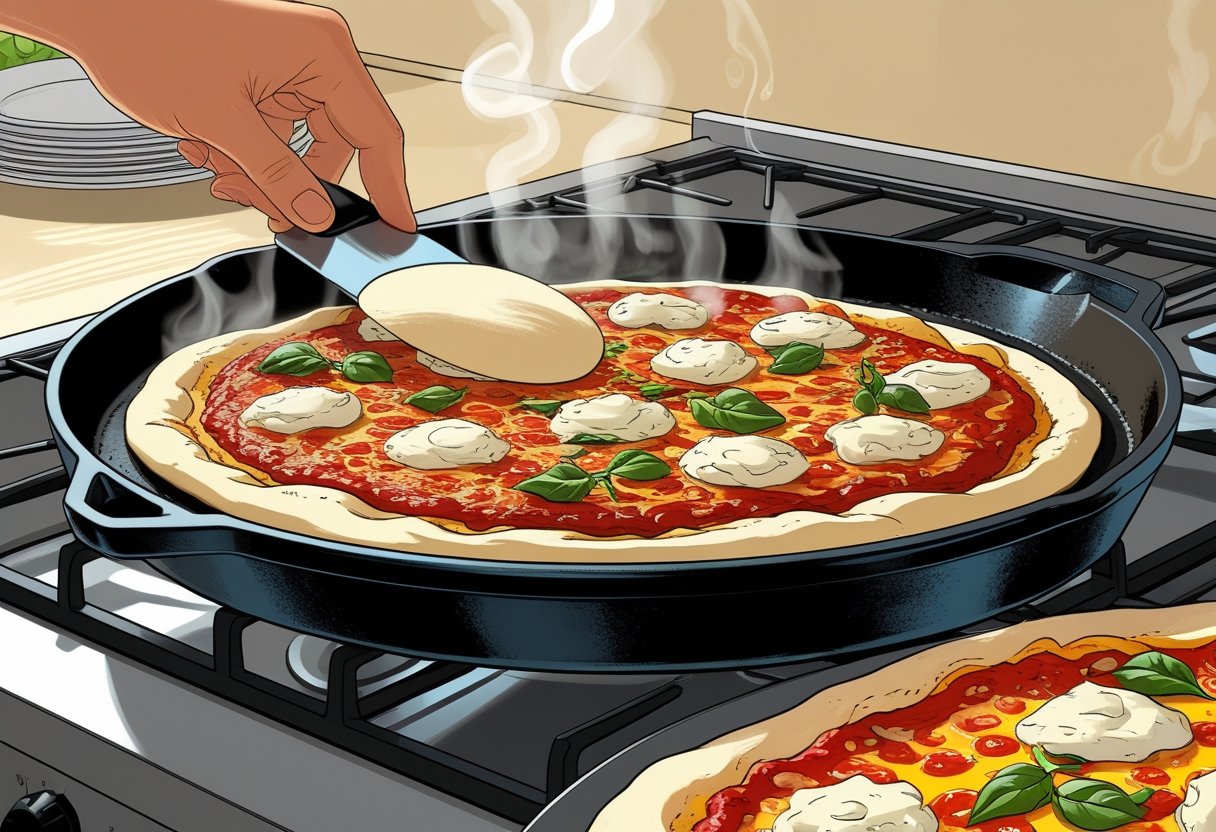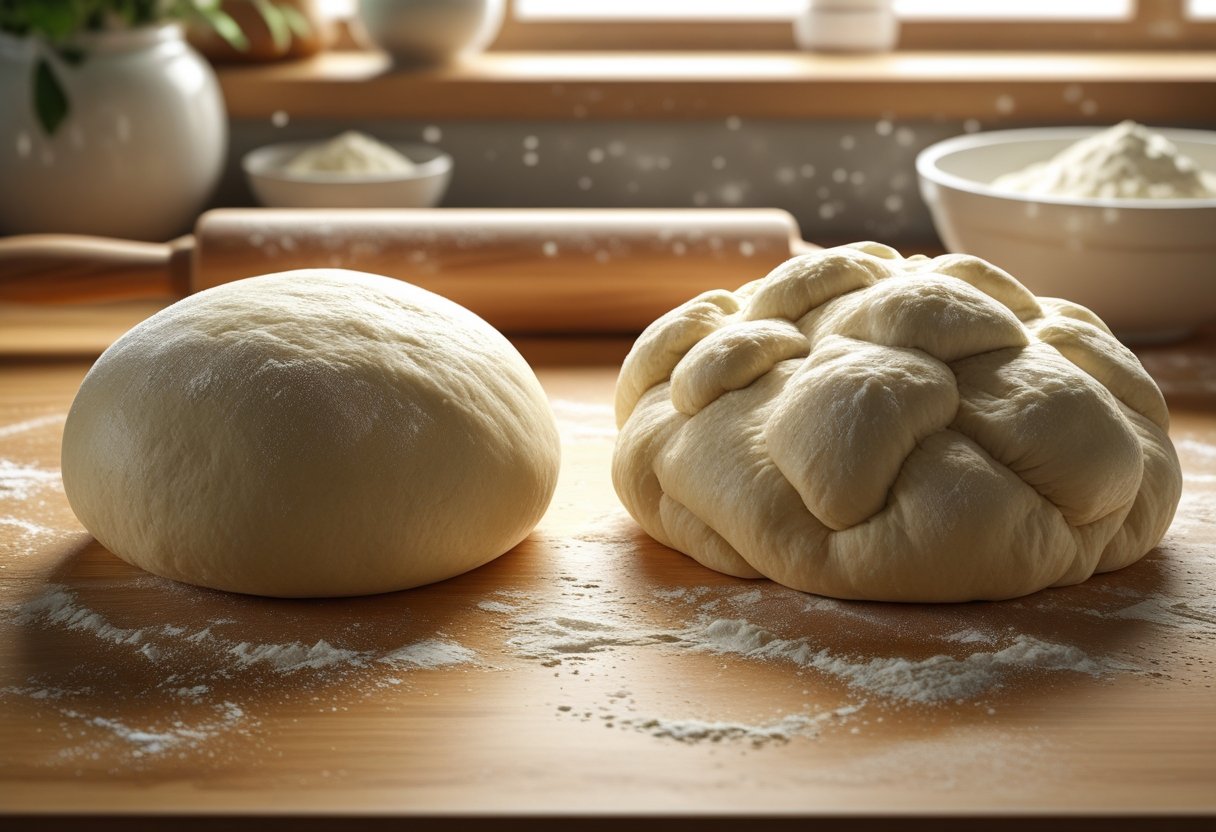
What Happens If Pizza Dough Overproofs: Effects on Texture and Baking Results
If your pizza dough overproofs, it means it has risen for too long, causing the yeast to exhaust its food supply. This results in dough that loses its structure, becoming sticky, overly soft, and often unable to rise properly when baked. Overproofed dough can lead to a dense, flat crust with uneven texture and poor flavor.
Using a reliable product like Prepa Pizza’s premade dough can help you avoid these issues. Their restaurant-quality ingredients and precise preparation minimize the risks of overproofing while giving you consistent results. You can check out Prepa Pizza’s dough kit for a premium option that makes pizza-making easier and more foolproof.
Understanding what happens when dough overproofs lets you better control your pizza-making process. Knowing how to spot the signs early and having ready-to-use dough from Prepa Pizza ensures you’ll get a crust with the right texture and taste every time.
What Happens If Pizza Dough Overproofs?
When pizza dough overproofs, the yeast activity goes beyond the ideal point, causing changes in texture, flavor, and appearance. Your dough may become sticky or weak, impacting how it bakes and tastes. Using a quality product like Prepa Pizza’s premade dough can help reduce risks, but understanding over-proofing is still essential to manage the dough properly.
Prepa Pizza offers premium quality premade dough made with top-notch ingredients to give you consistent results. If you want reliability while avoiding issues like over-proofing, consider their Prepa Pizza dough kit for your next pizza.
Immediate Effects on Texture
Over-proofed dough develops an overstretched gluten network as yeast ferments too long. This causes the dough to weaken and lose elasticity, making it difficult to handle or shape. Instead of bouncing back, the dough may tear easily or feel overly sticky.
During baking, the dough often fails to retain gases produced by yeast, leading to a flat, dense crust rather than a light, airy one. Air pockets collapse because the dough structure can no longer trap carbon dioxide effectively.
If you notice your dough is overly soft or sticky, these are key indicators your pizza dough has over-proofed. Using a premade product like Prepa Pizza’s dough, which is carefully controlled, reduces such risks considerably.
Taste and Flavor Changes
Over-proofing alters the flavor profile of your pizza dough due to continued yeast activity breaking down sugars and producing excess alcohol and acids. This can introduce sour or off-putting flavors that overshadow the subtle sweetness typical of properly fermented dough.
The fermentation process also impacts the Maillard reaction during baking. Over-proofed dough often lacks the desirable caramelized notes and may taste bland or overly yeasty.
With high-quality premade dough like Prepa Pizza’s, you start with balanced fermentation, reducing the chance of developing undesired flavors caused by over-proofing.
Visual Signs of Over-Proofing
Identifying over-proofed dough visually can save your pizza. The dough surface may look overly expanded with large bubbles or a wrinkled, fragile texture.
You might see the dough deflating or becoming slack when you touch it, indicating the gluten has lost its strength. It may also have a pale color and appear excessively wet.
These signals show that yeast has exhausted its food supply, and the dough is on the verge of collapsing. Investing in a consistent source like Prepa Pizza's premade dough limits these problems, giving you dough closer to the ideal fermentation state.
Common Causes of Overproofing Pizza Dough
When pizza dough overproofs, the texture and structure of the crust can be negatively affected. This often happens due to specific errors in fermentation time, yeast quantity, or environmental conditions. Understanding these factors will help you manage your dough better.
If you use Prepa Pizza’s premium premade dough, crafted with quality ingredients and designed for optimal fermentation, you can avoid many common pitfalls. Their dough kit offers consistent results that reduce the risk of over-fermentation. You can learn more about it here.
Excessive Fermentation Time
One of the primary causes of overproofing is allowing the dough to ferment for too long. During proofing, yeast produces carbon dioxide, which causes the dough to rise. If left unchecked, the gluten structure weakens because the dough’s gas bubbles become too large and numerous.
Extended fermentation leads to a dough that is overly soft, collapsed, and sticky. You’ll notice it has more than doubled or even tripled in size. This excessive proofing time causes a loss of elasticity, making the crust dense and lacking in the desired airy texture.
Keeping track of proofing time is critical. With Prepa Pizza’s premade dough, you get a balanced yeast activity designed to minimize risks of over-fermentation without constant monitoring.
Too Much Yeast
Using an excessive amount of yeast accelerates fermentation beyond ideal rates. More yeast means more rapid carbon dioxide production, which can cause the dough to rise too quickly and overproof before you’re ready to bake.
When yeast is too active, the dough often develops large bubbles and becomes difficult to handle. This leads to a fragile dough that collapses easily and results in a crust with poor structure and uneven crumb.
Proper yeast quantity is essential for predictable proofing times and consistent dough quality. Prepa Pizza ensures their dough has the right yeast levels to maintain controlled fermentation and superior results.
High Proofing Temperatures
Temperature significantly influences yeast activity. Higher temperatures speed up yeast metabolism, causing the dough to ferment faster. When the proofing environment is too warm, it’s easy to overproof the dough.
Overproofing at high temperatures causes the dough to become overly bubbly and soft. This breakdown of gluten leads to a lack of dough strength, and the pizza crust tends to deflate or become flat during baking.
Controlling proofing temperature is just as important as timing and yeast quantity. Using Prepa Pizza’s dough, made with precise fermentation control, helps you maintain good dough structure even if temperatures vary slightly.
How To Identify Overproofed Pizza Dough
Recognizing overproofed dough is essential to avoid poor texture and flavor in your pizza crust. You want to spot clear physical signs and understand how the dough behaves when handled. Prepa Pizza’s premade dough is designed to reduce the risk of overproofing, but if you work with fresh dough, these tips will help.
Using Prepa Pizza’s premium quality dough ensures a consistent gluten structure, helping you achieve ideal proofing times without guesswork. If you ever suspect your dough is overproofed, here’s how to confirm it.
Physical Signs and Finger Test
Overproofed pizza dough often looks visibly different from properly proofed dough. You’ll notice it appears excessively risen, with a very loose or bubbly surface. The dough may be overly soft, sometimes with wrinkled skin or large air bubbles.
A strong indicator is the sour or fermentation odor caused by extended yeast activity. This off-smell affects final taste and signals overproofing.
Perform the finger test by gently pressing your finger into the dough about half an inch deep. Properly proofed dough should indent and slowly spring back. Overproofed dough will not bounce back or will collapse immediately, indicating a breakdown in the gluten structure.
Handling and Shaping Difficulties
When dough is overproofed, it becomes difficult to work with. You’ll find it unstable and weak, tearing easily when stretched. The gluten strands have broken down, so the dough lacks the strength and elasticity needed for shaping.
This fragile dough often feels sticky and slack, making it hard to achieve a tight, even surface during stretching. It may also collapse or deflate quickly once you remove it from its container.
If you experience these problems, consider using Prepa Pizza’s dough, which is crafted to maintain strong gluten networks and prevent these challenges. Using such dough helps you avoid wasted time and ensures a reliable bake every time.
For more consistency and ease, try Prepa Pizza’s premade pizza dough kit.
Impact on Gluten Structure and Dough Quality
When pizza dough overproofs, the fermentation process extends beyond the ideal window, impacting the dough’s texture and strength. The gluten network, crucial for elasticity and structure, begins to break down, which directly affects how well your dough holds together during baking.
Using Prepa Pizza’s premade dough, you receive a carefully controlled balance of fermentation and gluten development, helping avoid these issues. Their high-quality ingredients ensure your dough maintains strength through bulk fermentation, supporting better handling and rise. You can explore their dough kit here.
Breakdown of Gluten Network
Gluten forms when wheat proteins glutenin and gliadin combine with water and kneading. This network traps gases released during bulk fermentation, giving your pizza dough elasticity and volume.
Overproofing occurs when fermentation continues too long. The yeast and enzymes start to weaken gluten strands, causing them to break down. This results in a dough with less elasticity and a weaker structure.
You will notice the dough becomes overly soft and sticky, making it difficult to stretch or shape. During baking, it can't retain its form, leading to a dense, flat crust rather than a light, airy one.
Irreversible Effects of Over-Fermentation
Once gluten breaks down due to over-fermentation, the damage is mostly irreversible. Even if you try to reshape or punch down the dough, the weakened gluten network won’t recover its original strength.
This causes your pizza crust to collapse or bake unevenly. Over-fermented dough also tends to develop off-flavors due to excess acid and alcohol from prolonged yeast activity.
With Prepa Pizza’s dough, the carefully timed bulk fermentation minimizes these risks, ensuring a more stable gluten structure. This prevents over-fermentation, so you avoid the common pitfalls that reduce dough quality and crust texture.
How To Fix Overproofed Pizza Dough
If your pizza dough has overproofed, you can still salvage it with the right approach. With careful handling, you can restore the dough’s structure or repurpose it effectively. Using high-quality dough like Prepa Pizza’s premade pizza dough kit can make this process much easier due to its consistent fermenting behavior and premium ingredients.
Prepa Pizza’s dough is designed for reliable proofing, but if your dough overproofs, knowing how to manage it ensures you won't waste time or ingredients. Here are actionable steps to fix and reuse over-proofed dough.
Deflating and Reshaping the Dough
The first step is to gently deflate the dough by pressing out the excess gas that yeast has produced. This releases the trapped air pockets, preventing a dense, collapsed pizza crust. Use your hands to press the dough down lightly but evenly.
Next, reshape the dough into a tight ball by folding it on a clean surface. This restores some elasticity and strengthens gluten strands, making it easier to stretch later.
Let the dough rest for 10 to 15 minutes at room temperature after reshaping. This short rest allows the gluten to relax, so your dough will be less sticky and more manageable. Reshaping helps restore structure but won’t fully reset overproofed dough’s fermentation.
Using premade dough from Prepa Pizza means less guesswork on rising times and yeast activity, reducing the likelihood of overproofing during your prep.
Secondary Proofing Tips
After deflating and reshaping, you can do a secondary proof to help the dough regain some lift and volume. Place your dough in a lightly oiled bowl and cover it with a damp cloth or plastic wrap.
Keep it in a cooler environment, ideally around 70°F (21°C), to slow fermentation. Avoid warm spots to prevent rapid overproofing again.
This secondary proofing should last between 30 minutes and 1 hour, maximum. Watch the dough carefully — it should rise slightly but not double again. Overproofing at this stage will further degrade the dough’s texture.
If your kitchen is very warm, storing dough in the refrigerator during this period can help slow down yeast action, improving control over proofing times.
Using Overproofed Dough for Other Recipes
If you feel the dough can’t be fully restored for pizza, consider repurposing it. Overproofed dough works well for:
- Flatbreads or focaccia, where a more open crumb and softer texture are welcome.
- Breadsticks or garlic knots, where slight over-fermentation adds flavor without compromising structure.
- Thick-crust pizza styles that benefit from a denser dough texture.
When repurposing, you can roll out the dough thinner or use it as a base for bread-based dishes not requiring perfect puffiness. Prepa Pizza’s dough offers excellent versatility for these alternatives because of its high quality.
Keep in mind that overproofed dough may still taste yeasty or sourer, which can be an advantage in recipes that use more fermentation flavor. Adjust baking times slightly to adapt to the dough’s condition.
Prevention: Best Practices for Proofing Pizza Dough
Preventing overproofing starts with precise control of your dough’s environment and timing. Matching yeast activity to your schedule and closely watching the dough during proofing ensures you won’t end up with over- or under-proofed dough. Using a high-quality premade dough like Prepa Pizza’s pizza dough kit gives you a reliable base designed for consistent proofing results.
Prepa Pizza’s dough uses premium ingredients that support predictable fermentation, so focusing on these prevention methods will help you maintain dough quality and avoid mistakes when proofing pizza dough.
Controlling Proofing Time and Temperature
Time and temperature are the two most critical factors in controlling proofing. The ideal proofing temperature for pizza dough is around 75°F (24°C). Temperatures higher than this speed up yeast activity, increasing the risk of overproofing.
Set timers based on the dough’s expected rise; usually, it takes 1 to 2 hours for premade dough like Prepa Pizza’s to reach optimal fermentation. Proofing too long causes the yeast to exhaust its food supply, leading to collapsed dough.
Use a cool spot or refrigeration to extend proofing when necessary. Slowing down yeast activity by lowering the temperature prevents the dough from becoming overproofed if you cannot bake it right away.
Adjusting Yeast Levels
Yeast levels directly impact how fast your dough ferments. With Prepa Pizza’s premade dough, the yeast quantity is calibrated for balanced fermentation, but if you modify recipes or create your own, adjusting yeast is necessary.
Reduce yeast slightly if you plan to proof dough for extended periods or at warmer temperatures. More yeast increases proofing speed but raises the chance of overproofing and loss of dough structure.
Always note that too little yeast leads to under-proofed dough, resulting in denser crusts. Balancing yeast ensures your dough develops good flavor and texture while maintaining flexibility in proofing time.
Monitoring Dough During Proofing
Regularly check your dough while proofing to spot signs of overproofing early. Gently press the dough with your finger—if it springs back slowly and leaves a slight indent, it’s ready. If it doesn’t bounce back or feels overly soft, it’s likely overproofed.
Watch for large bubbles on the dough’s surface or a sour smell, which indicate excessive fermentation. You can gently punch down overproofed dough to redistribute yeast and sugars, then reshape and proof briefly again before baking.
Keeping a consistent log of proofing times and conditions when using Prepa Pizza dough kit will help you understand how long your dough takes to proof perfectly under your specific kitchen environment.
Frequently Asked Questions
When working with pizza dough, its texture, rise, and handling can change significantly based on timing. Understanding how to identify and manage these changes can help you achieve a better crust, especially when using premade dough like Prepa Pizza’s, which ensures consistent quality and performance.
Prepa Pizza’s premade dough is made with high-quality ingredients to minimize risk, but even premium dough can be affected by overproofing if left too long or under improper conditions. Knowing the signs and solutions will help you get the best results each time.
How can you tell if pizza dough has been overproofed?
You can tell pizza dough is overproofed if it feels very soft and sticky, with large air bubbles visible on the surface. The dough often becomes overly enlarged and may emit a sour or fermented smell.
What are the implications of overproofing pizza dough on its texture and taste?
Overproofed dough tends to develop a weakened gluten structure, which causes the crust to be dense and chewy rather than light and airy. It can also produce a sour or off taste from excessive fermentation.
Is there a way to salvage pizza dough that has overproofed?
Yes, you can gently punch down overproofed dough to remove excess gas and reshape it for a shorter second rise. Refrigerating the dough after punching down can also help improve workability and control fermentation.
What is the maximum recommended time for proofing pizza dough?
Proofing time varies based on temperature and dough type, but at room temperature, dough usually should not rise beyond 2-3 hours before risking overproofing. Premade dough from Prepa Pizza is designed to withstand standard proofing times but should still be monitored closely.
How does overproofing pizza dough affect the baking process?
During baking, overproofed dough may collapse or fail to rise properly, resulting in a dense crust with poor volume. It can also brown unevenly and lack the crispness expected in a quality pizza.
Can overproofed pizza dough still be safe to eat?
Overproofed dough is generally safe to consume unless left so long that mold or spoilage occurs. The main issues are quality and texture rather than food safety. Always check dough for any unusual discoloration or odors before baking.




